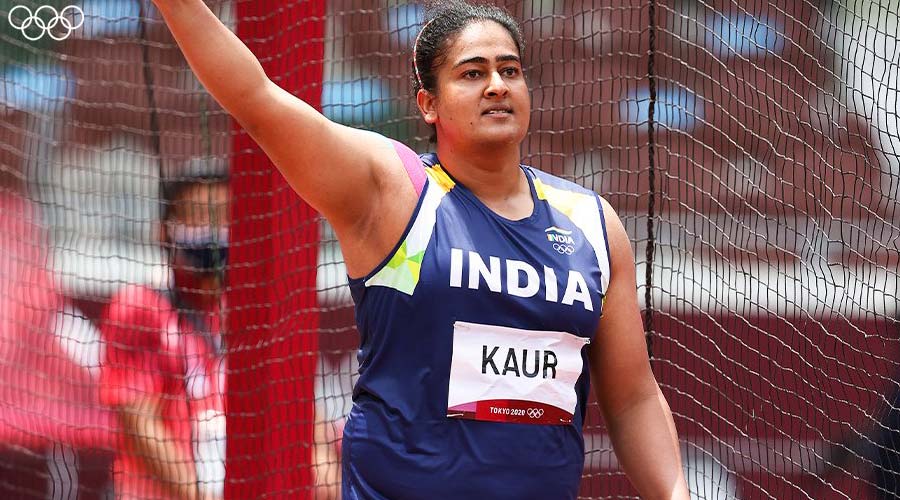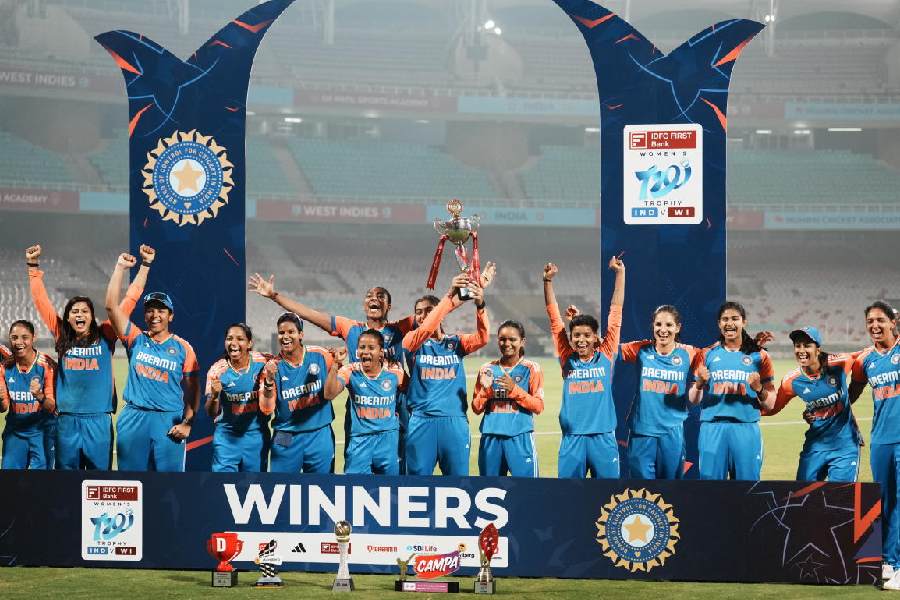Discus thrower Kamalpreet Kaur produced one of the best performances by an Indian in the Olympics, though in a qualifying round, as she made it to the final of the ongoing Games after finishing second on Saturday.
The 25-year-old Kaur, competing in qualification B, sent the discus to a distance of 64m in her third and final attempt to be one of the only two automatic qualifiers for the final round, the other being American Valarie Allman (66.42m).
The final will be held on Monday. “She has been in good form and just repeated her performance. On Monday, Kamalpreet will do what is expected to do. After that it’s not in her hands. If somebody hurls 70m what can Kamalpreet do?” Athletics Federation of India president Adille Sumariwalla told The Telegraph from Tokyo.
The Indian ended ahead of defending gold medallist Sandra Perkovic (63.75m) of Croatia and reigning world champion Yaime Perez (63.18) of Cuba. Perkovic qualified at third and Perez at seventh.
However, veteran four-time Olympian Seema Punia made an exit after finishing 16th overall.
Kaur began with a 60.29m effort and then improved it to 63.97m before her third throw of 64m. Every competitor gets three throws. Those who touch 64m or the 12 best performers in the two qualifying rounds advance to the final.
Kaur has been in impressive form this year as she breached the 65m mark twice recently. She threw 65.06m during the Federation Cup in March to break the national record and become the first Indian to breach the 65m mark. In June, she bettered her own national record with a throw of 66.59m during the Indian Grand Prix 4 to sit at world No. 6.
Interestingly, after the youngster from Punjab’s Sri Muktsar Sahib had broken the 66m mark, Seema had raised concerns on her genuineness and sought a hyperandrogenism test (testosterone and other androgens) from the AFI and the Sports Authority of India.
Hyperandrogenism is a condition which causes higher testosterone levels than expected in biological females.
However, according to World Athletics guidelines none of the field events falls under the hyperandrogenism review.











